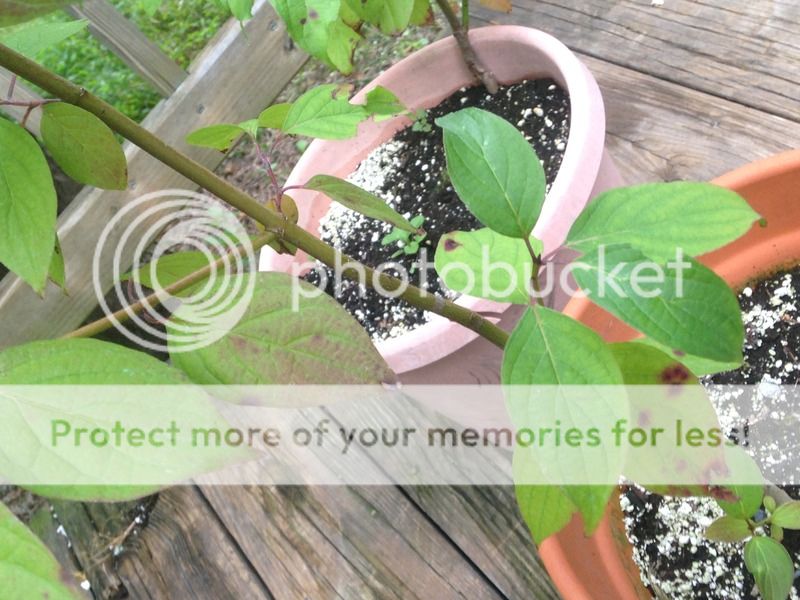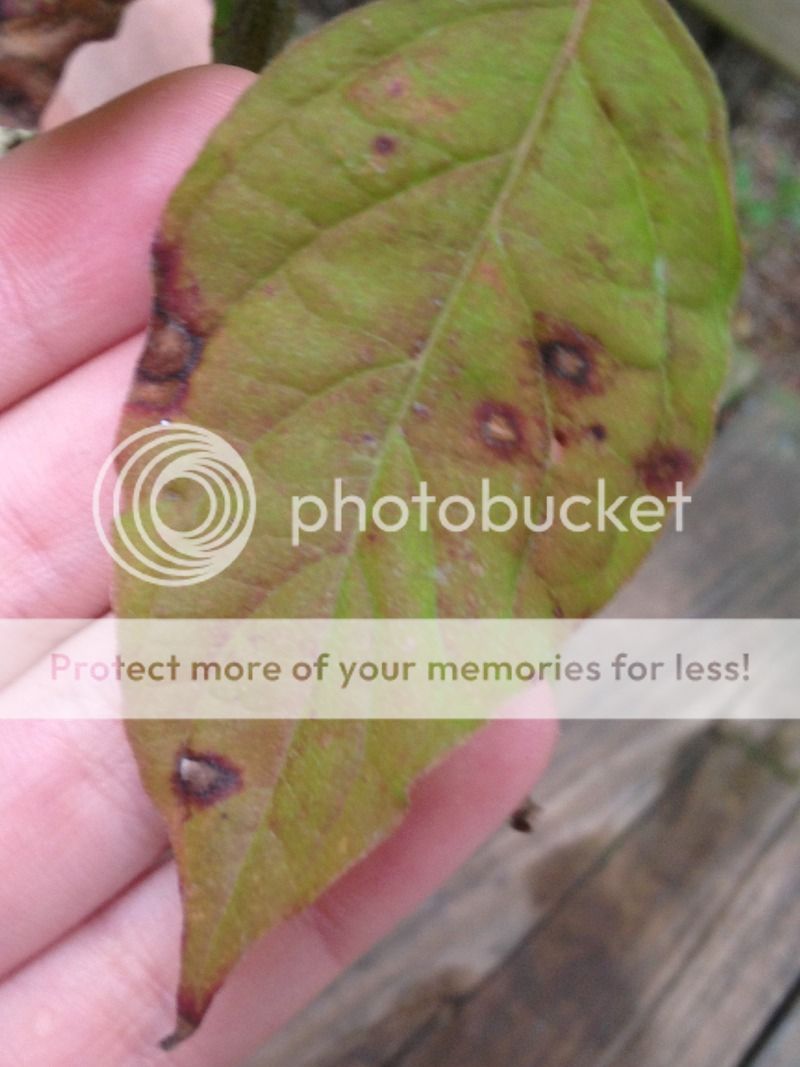When did you buy them/ how long have you had them? How long have they been showing spots? What has your weather been like?
Unfortunately, I'm afraid they may be infected with dogwood anthracnose. It is a fungal disease that has been decimating dogwoods in much of the country. Like other fungal diseases, it thrives in cool wet weather, but it can attack at any time.
https://www.na.fs.fed.us/spfo/pubs/howto ... ht_dog.htm
"Leaf symptoms develop first in the lower crown and progress up the tree. Symptoms include tan spots that develop purple rims. Leaves may also have necrotic veins and leaf margins, and large necrotic blotches. In some cases shot holes appear. Premature abscision of leaves infected in the spring is characteristic of the disease on C. nuttallii. On both hosts, leaves that are entirely blighted do not abscise in the fall. Infections often progress down the petioles of blighted leaves into shoots, resulting in cankers."
Treatment is to keep the tree as healthy as possible, keep it in full sun where leaves can dry out quickly, never water the leaves, cut off and discard infected leaves.
https://www2.ca.uky.edu/agcollege/plantp ... OR-W-6.pdf
"If the tree is valuable enough, fungicide sprays may be warranted. The active ingredients chlorothalonil (e.g., Daconil 2787), benomyl, thiophanate-methyl (Cleary’s 3336), mancozeb (Fore, Manzate 200), or propiconazole (Banner) are effective
protectant fungicides. Fungicides should be applied beginning at bud break in the spring and continued
biweekly until hot, dry summer weather. Thorough coverage is essential. Without proper spray equipment, protection from anthracnose with fungicides will not be effective. "
Note the word protectant. That means it works better to prevent infection than to treat established infection.
The effective fungicides are environmental bad actors that ordinarily I would not recommend. In this case it may be a choice between those or letting dogwoods go the way of chestnuts, dutch elms, and now ash trees (emerald ash borer).
But read more and talk to people, be sure it really is the anthracnose. If so, you will have to figure out if your baby dogwoods that are already infected are worth taking extreme (and perhaps ineffective) measures to try to save.



